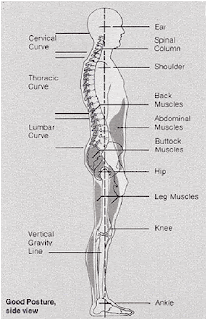For those not in the know, cross syndrome is a term coined by Vladimir Janda in the 80s for a series of muscular and postural imbalances. It signifies the criss-cross pattern of shortening and lengthening of muscles that results in postural imperfections, such as the classic forward shoulder position from tight upper traps and pecs combined with weak neck flexors and lower traps.
These cross patterns occur through both the upper and lower body as termed by Janda. Similar principles exist through the entire kinetic chain overall, not being isolated with just the aforementioned saggital (front and back) planes.
I take issue with the name "cross syndrome", though, as I find that it's regarded with more fear than it should. The term "syndrome" is mistaken by many individuals (usually ones that are self-researching for their own health or working in fitness) to be synonymous with "disease". This is absolutely not the case.
I wrote before about how textbook posture is an unrealistic achievement and a largely-unnecessary goal. These cross patterns (as I prefer to call them) are often correlated to injury, yes, but not causative to them.
Many, many people will walk around with forward heads and rounded T-spines their entire lives and never experience shoulder pain. Anterior pelvic tilt does not automatically signify lower back pain. We need to not fear these postural imperfections and think that they always need to be corrected for.
Obviously, these patterns are something that we pay attention to if there is pain, because they provide the rehab practitioner a good place to start in terms of relieving the symptoms and the mechanics that caused the injury. In absence of a symptomatic dysfunction, though, there's very little to gain by trying to address the "imbalance".
All in all, there's no real problem with wanting to train yourself to stand taller, but we shouldn't be concerned when we look sideways in a mirror and notice "upper cross syndrome". If it ain't broke, don't fix it. If it doesn't hurt, if it doesn't impede your performance or day-to-day activity, it's probably functional.
Subscribe to the Weekly Updates
Do you like the content that you're reading? Sign up to receive the weekly blog update from Cain Exercise Rehab directly to your email!



No comments:
Post a Comment